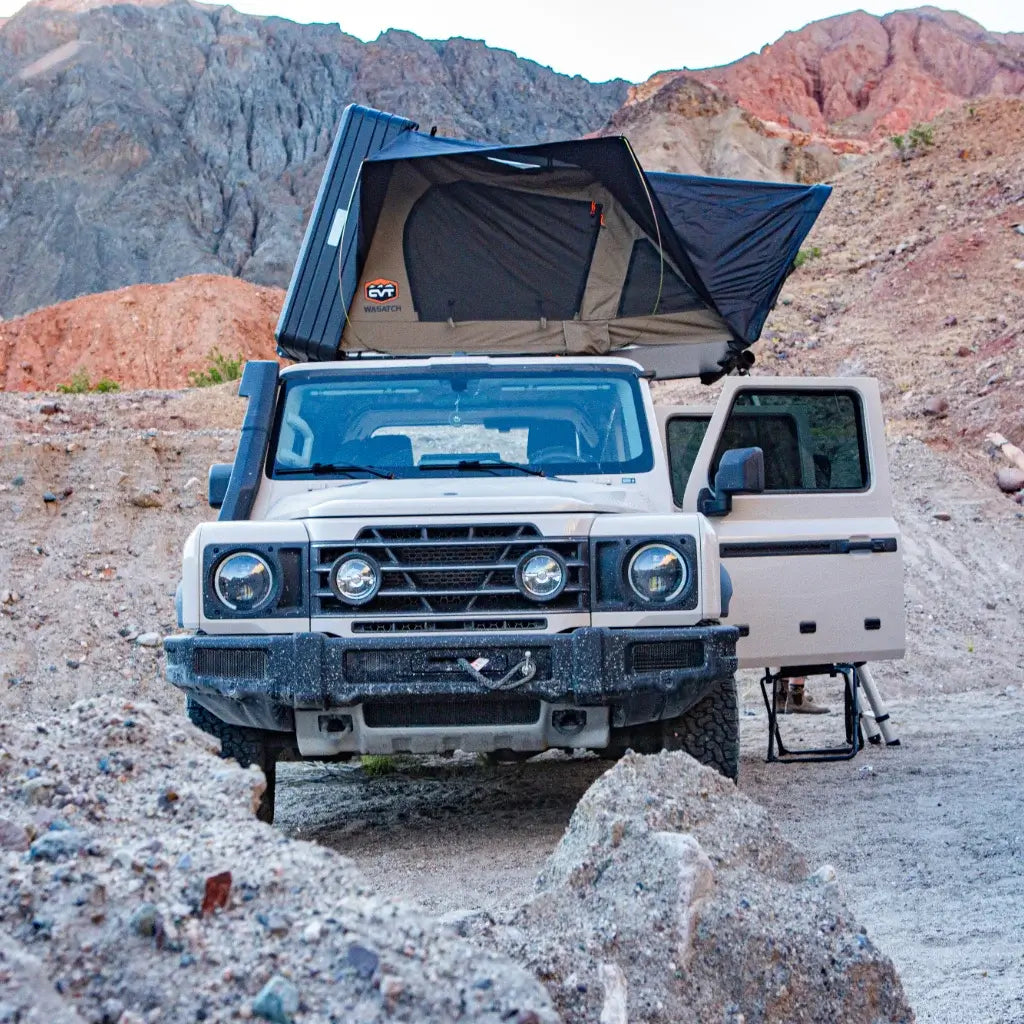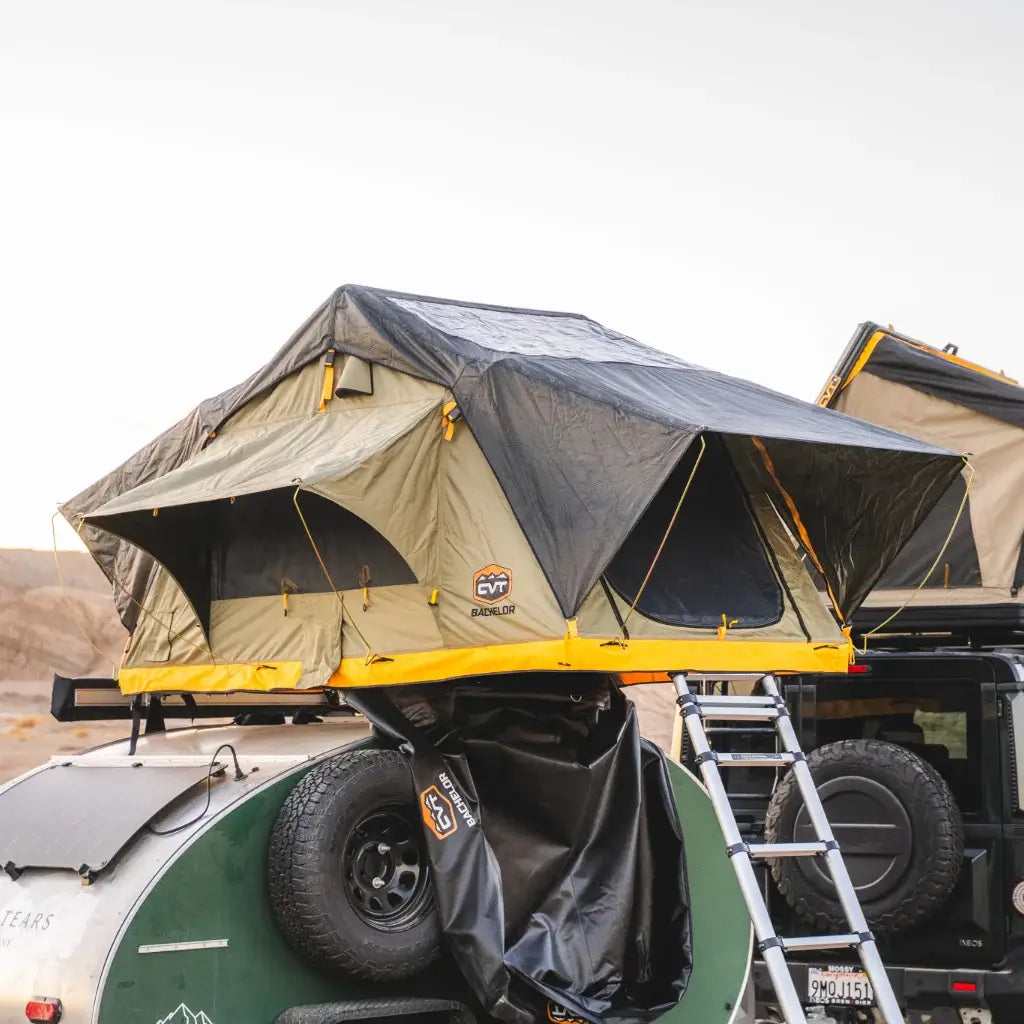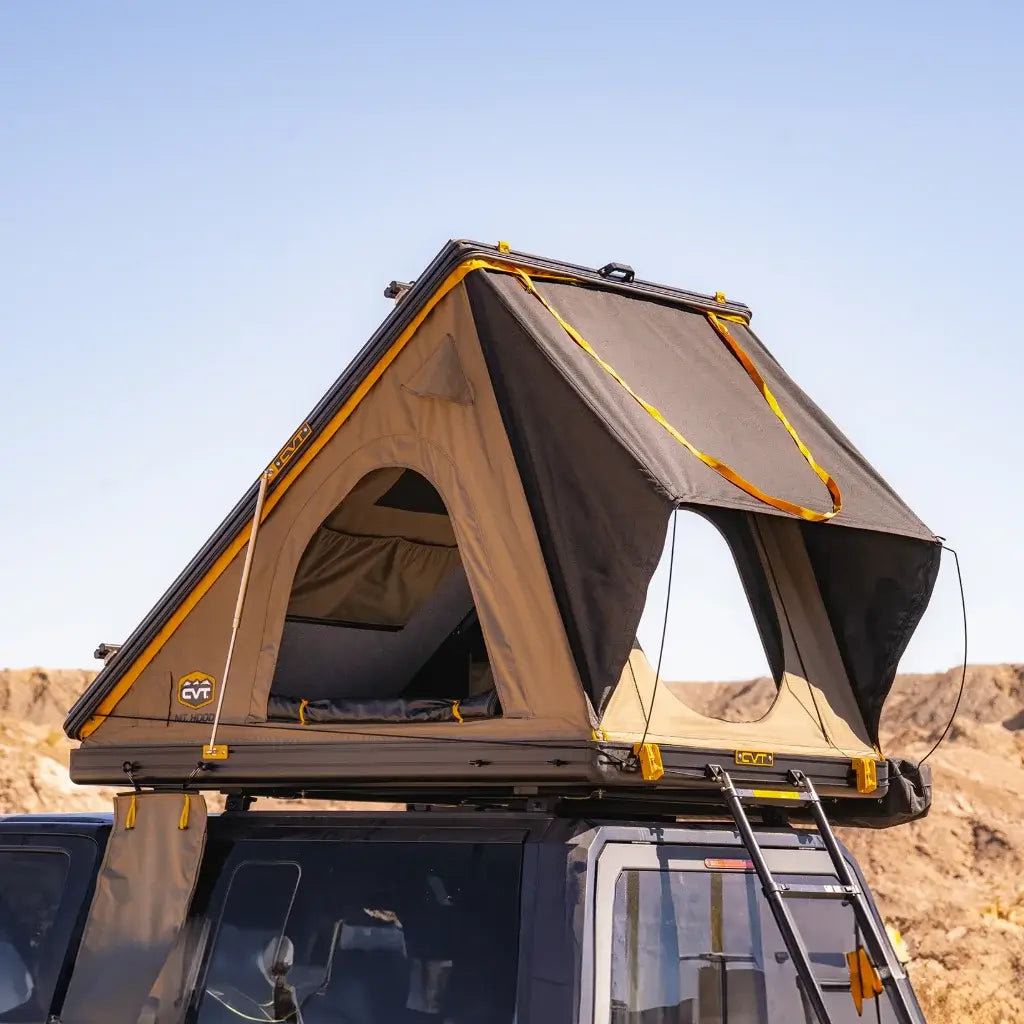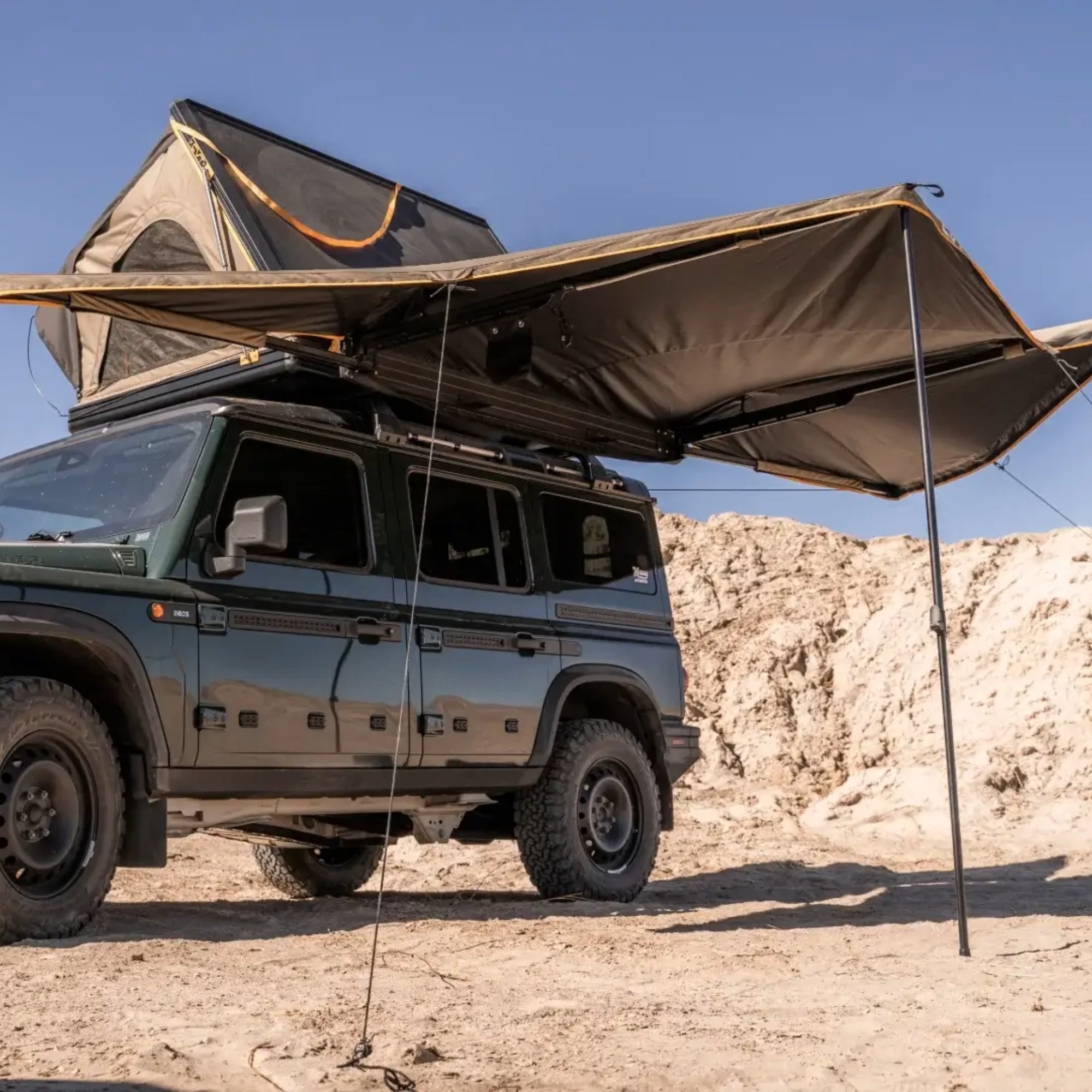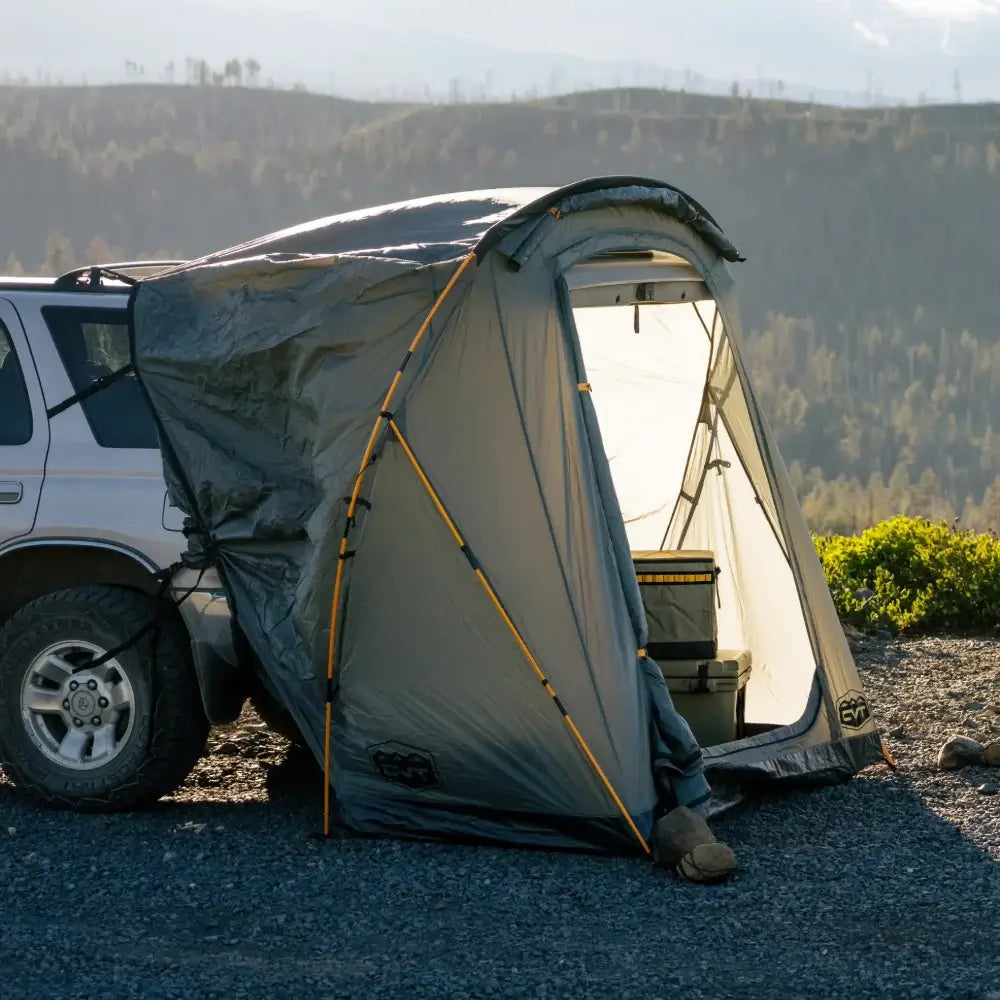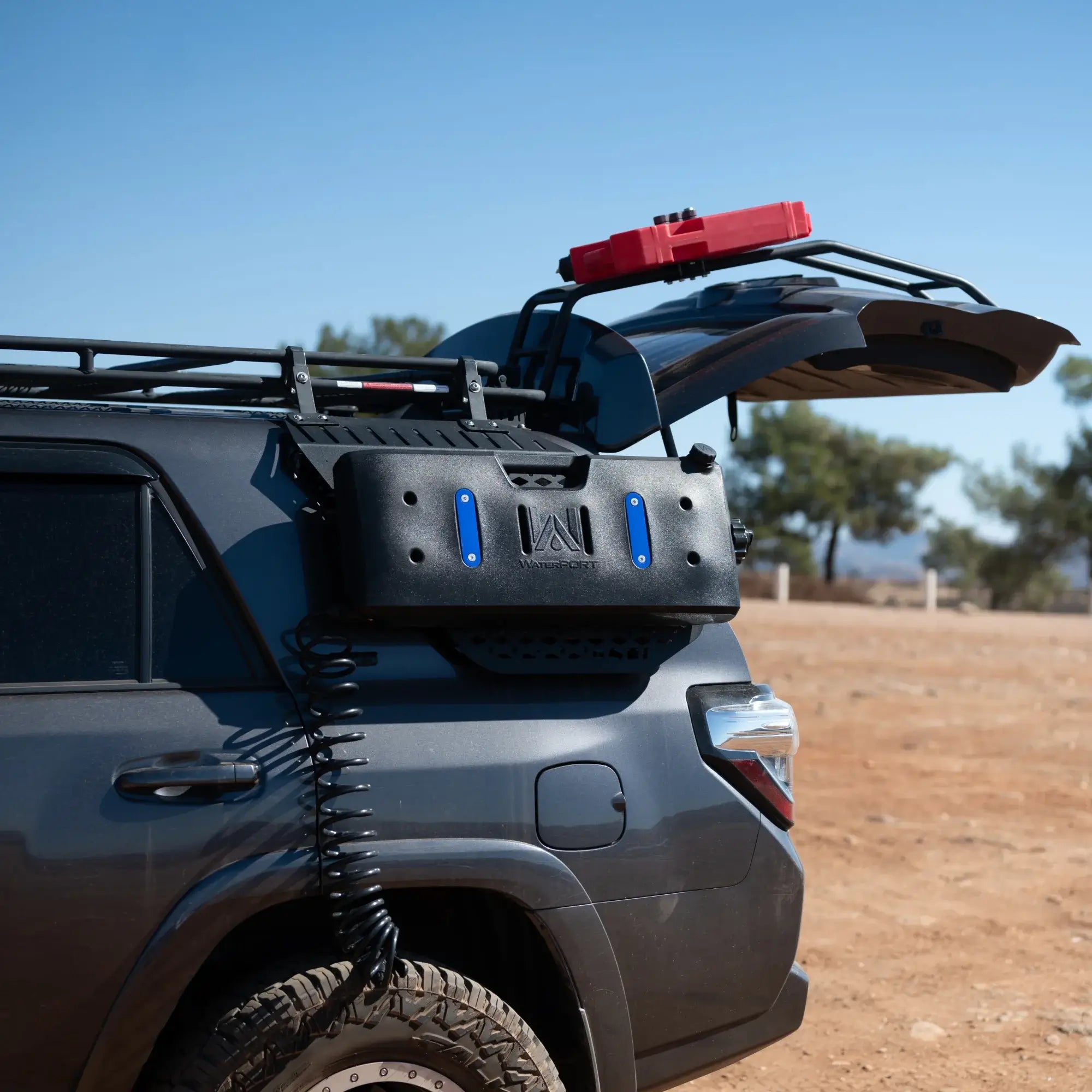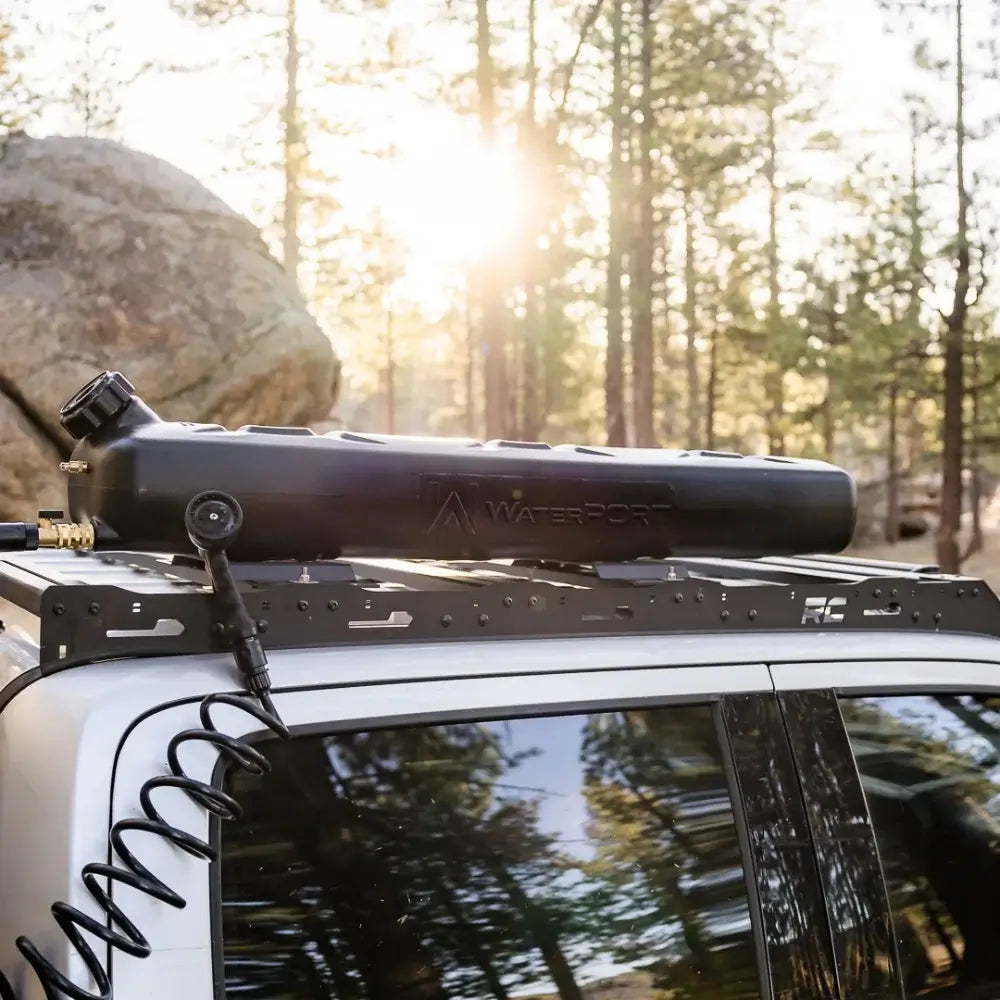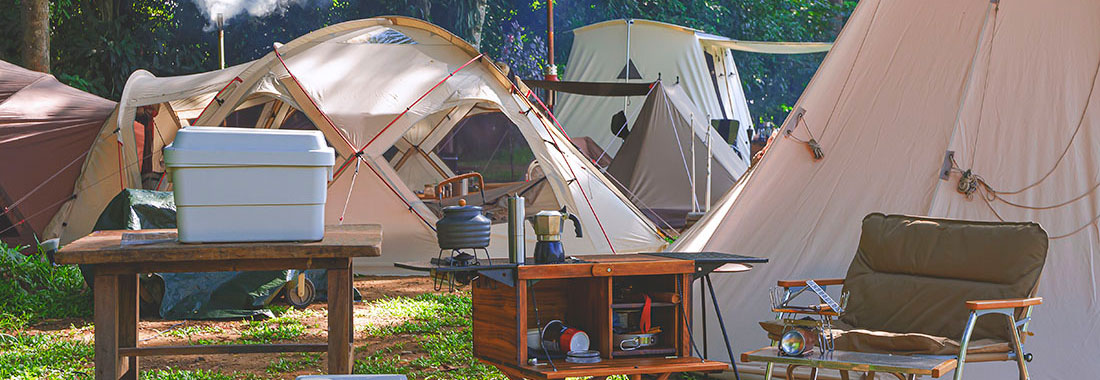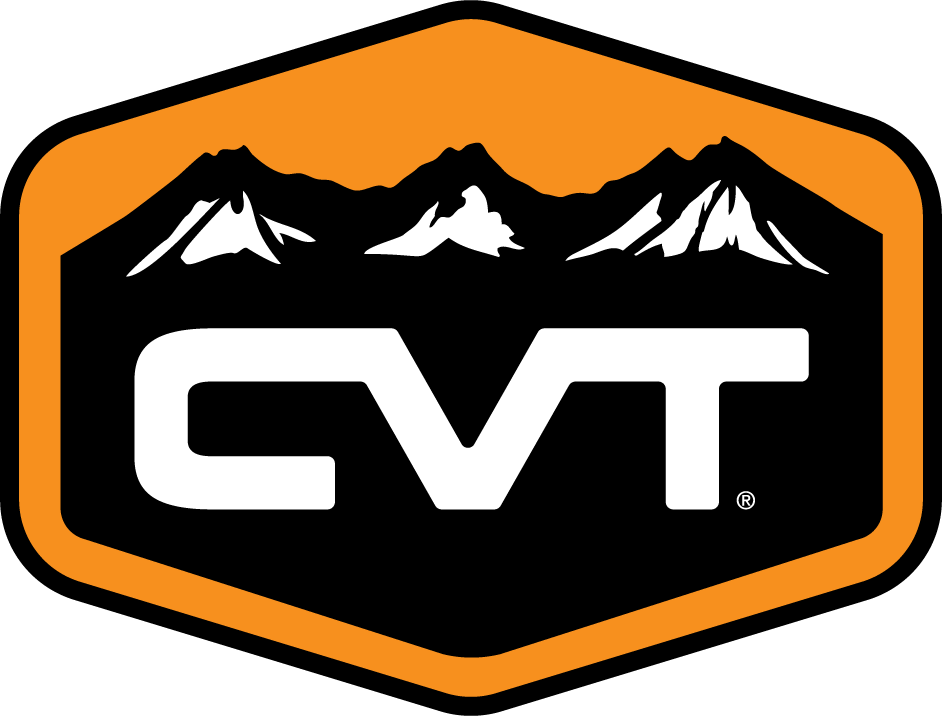Being organized with your camping gear can make your life much easier, especially when camping in a car. Not only will organization help you quickly locate things, but it will also help you with the packing stage.
Whether a car camping newbie or veteran, you’ll love these storage hacks!
How to Organize Car Camping Gear
The first step to organizing your gear is to lay it all out and put each item into its appropriate category. For example, we can divide car camping gear into five categories.
1. Sleep and Shelter
Sleep and shelter is the bulkiest gear group and includes things like sleeping bags, tents or car camping tents, blankets, pillows, chairs, lanterns, and anything else you may need for your comfort.
2. Safety and Tools

This category includes first aid kits, flashlights, lighters or matches, scissors or knives, multi-use tools, and other equipment. Items like these are best kept in durable, weather-resistant storage solutions that make it easy to access them when needed.
3. Kitchen (materials and food)
Kitchen supplies have two subcategories: materials and food. Materials refer to anything you may need for cooking or eating like utensils, plates, cups, pots and pans, camp stove and fuel, aluminum foil, cutting boards, can opener, Tupperware, sponge, soap, bucket, trash bags, and more. Food includes dry food, non-perishables, and cold food. Here is a complete list of camping kitchen items.
4. Personal Gear (clothes and toiletries)
Personal gear also has two subcategories: clothes and toiletries. These are any essential items for each individual, such as medications, clothes, towels, baby wipes, sunscreen, toothpaste, toothbrush, etc. Using a car top duffel provides a weatherproof, spacious option for storing personal gear without taking up room inside the car. Camping cubes also help keep toiletries and smaller items organized and easy to grab.
5. Extras
Extras include miscellaneous items you desire to bring on your camping trip. These items could be a camera, portable charger, journal, instrument, book, games, etc. For water play or quick rinses on hot days, WaterPORT's portable tanks are a practical addition that can double as entertainment for kids and cleanup for gear.
For a complete car camping gear list, check out this car camping checklist.
Car Camping Storage Hacks
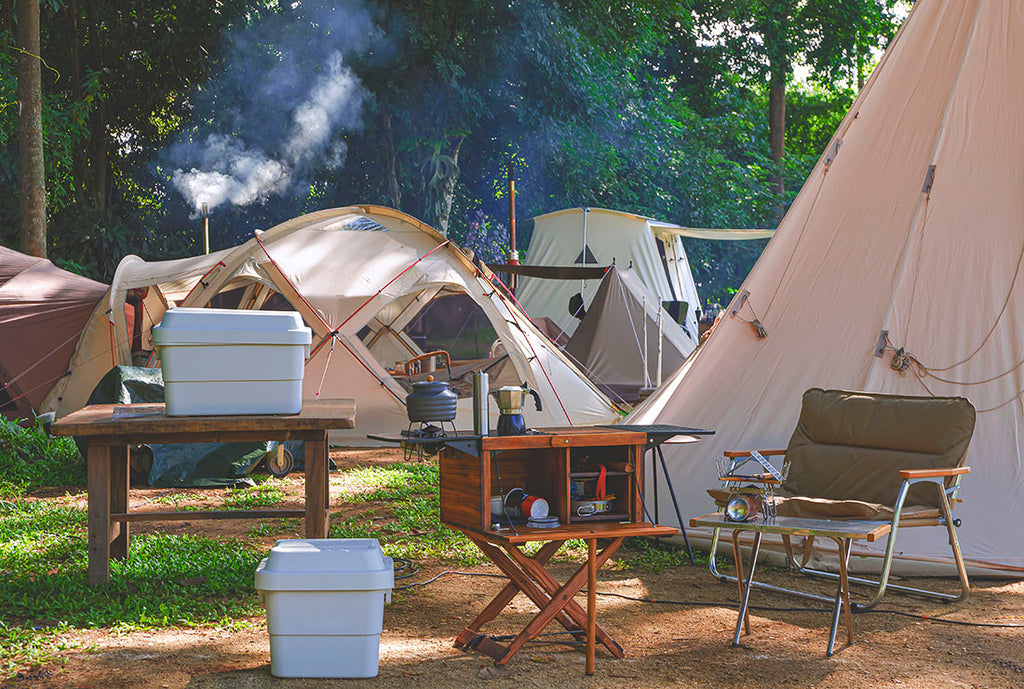
We recommend using storage bins to organize most of your camping gear. That way, you put all similar equipment together and can conveniently locate any item. This section will overview each bin, how to organize it, and provide some general pointers.
Bin #1 - Kitchen Materials
The kitchen materials bin should not have any food in it. It should just be what you need to cook, eat, and clean up after.
- Bring extra bags of all sizes (ziplock, gallon, plastic, trash, etc.) for storing opened food and other items.
- Pack chip clips, rubber bands, and Tupperware.
- Bring multi-purpose items. Like a mug, you can use it for drinks, coffee, and soup. Or a knife that will cut meat and veggies.
- Keep a paper and pen so you can record any missing supplies to restock for the next time.
Bin #2 - Kitchen Food
The second container will have all your dry, perishable, and non-perishable food. Think granola bars, oatmeal, peanut butter, fruit and vegetables, chips, bread, tea and coffee packets, etc.
- Use a bin with a lid that latches to protect the food from critters and mice.
- Pack heavier items on the bottom and then the lightest or most delicate items on top.
- Use reusable camping storage bags to group foods together—for example, fruits, veggies, s’mores supplies, drink packets, etc.
- Transfer spices and condiments into smaller containers.
- If you frequently go camping, you could invest in a camping spice container for your favorite seasonings.
- You’ll need a decent cooler or portable fridge if you bring cold food.
- Plan your meals to avoid overpacking.
Bin #3 - Safety and Tools
Depending on the size of your first aid kit, you can put these items together or divide them up. Of course, you’ll want these items readily accessible in case of an emergency.
- Bring extra batteries for flashlights and headlamps.
- Pack bear spray and insect repellent. Place them in separate bags, so they don’t stink up the rest of your stuff.
Bin #4 - Personal Items
We recommend storing all clothes in a duffel bag and then putting toiletries in a small case or bag you can slip inside the bigger duffel. This way, your toiletries are nicely all together.
- Think multi-purpose. Don’t overpack clothes.
- Don’t forget to pack hats, sunscreen, and sunglasses.
- Keep medications in a designated place in your car at all times.
- Use smaller mesh bags to organize clothes. This way, you can keep smaller items together like underwear, socks, and bathing suits.
- Each person should have a different colored duffel bag so you can quickly tell them apart.
- Pack some items together if you will use them at the same time. For example, you can put bathing suits, water shoes, towels, and sunscreen for each person into one bag.
- Invest in rapid-drying, microfiber towels.
- Bring trash bags for dirty clothes and shoes.
- Store toilet paper in a plastic bag so it doesn’t get wet, and keep it in an accessible place.
Bin #5 - Sleep and Shelter

Sleep and shelter items won’t fit in a bin, and most come with their case or protective sleeve. That’s okay because you’ll want these items easily reachable if you need to set up camp quickly.
- Store pillows and blankets in trash bags so they don’t get dirty
- Remove blow-up mattresses and tents from boxes to occupy less space in the car.
- Use a soft-side storage unit to keep loose sleep items like extra blankets, sheets, or headlamps organized and easily accessible
- Pack these items last!
Bin #6 - Extras
All extra items can go in a small bin or bag. Since they’re not as important, you can put them in harder-to-reach places.
- If you have pets, keep a designated pet bin or bag.
- Group sports equipment together.
Camping Organization Tips - How to Pack the Car
This section will give some pointers on how to organize your car and other car camping storage tips.
- Clean out your car before each camping trip. You’ll need as much space as possible.
- Set all bins next to your vehicle to get an idea of how much stuff you have.
- Fill up the trunk first. Put the heaviest things first, like the bins with kitchen materials and food.
- Put duffel bags and sleeping bags on top of the containers.
- Keep the things needed to set up your car camping tent, the tent itself, and sleeping items easily accessible.
- Put any essentials in last. You can lay them on top of other things.
- Put the first aid kit, some water, and snacks in the middle row.
Other tips:
- Use clear storage bins if you have them.
- Invest in hanging shoe racks for your car or suction-cup caddies for tools and toiletries.
- Keep a spare key with an adult or hidden somewhere outside the vehicle so you don’t accidentally lock yourself out.
- Color-code and label as much as possible, so it’s easy for everyone to locate the items they need.
- Store emergency car-related equipment like jumper cables and tire repair kits.
Organizing your camping equipment will make the car camping experience much less stressful and more enjoyable. So try out these tips and tricks on your next camping trip!

